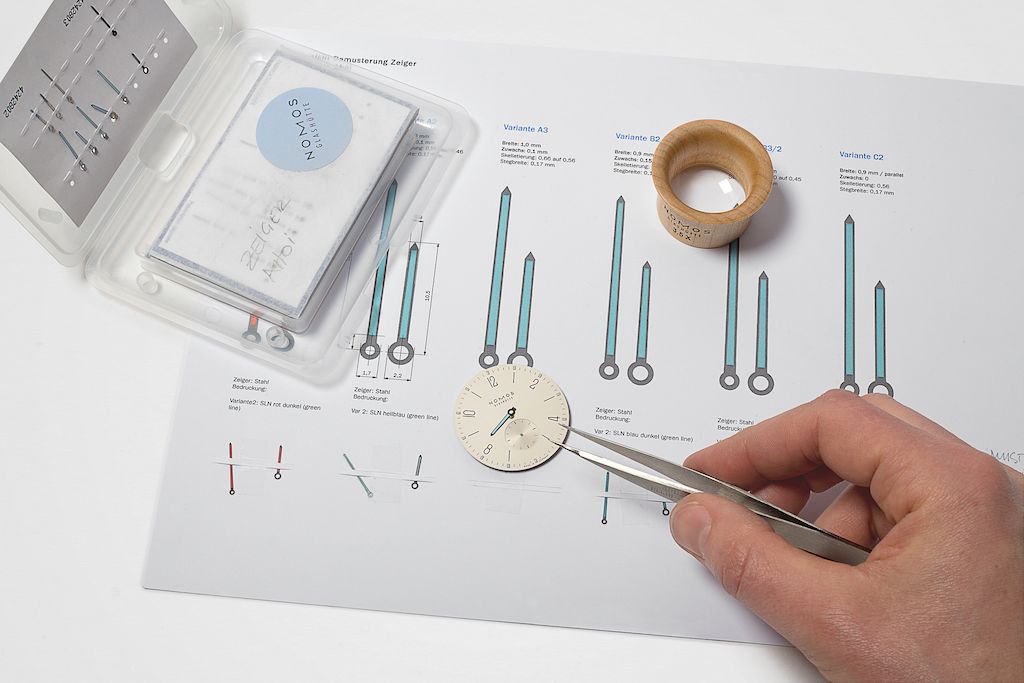The oldest clock hands could be considered to be the shadow rods of sundials, which were created about 5000 years ago—or rather the shadows of the shadow rods, because only these naturally moved. Watch designs with hands that moved themselves were later developed in medieval Europe, initially only a single-hand models; the minute hand only became necessary as the display became more accurate, which occured in the 18th century. Mechanical watches from NOMOS Glashütte usually have three hands, with the second hand rotating decentrally in the sub-seconds dial. NOMOS watch models without a seconds hand are called Duo.
What are the shapes of watch hands?
The arrangement and shape of the hands very much determine the face of a watch. In addition to straight—the original baton hands, which are also called obélisque hands— there are other typical shapes: the sword-shaped lancet hand, which emerges as if from a stem; the similar but somewhat softer feuille or leaf shape; pear-shaped hands, in which the tip of the minute hand is correspondingly thickened in the shape of a pear; and diamond-shaped dauphin hands. The Breguet hands, named after the French watchmaker Abraham Louis Breguet (1747-1823), which are interrupted by a circle in the last third, are considered legendary.
What kind of hands do mechanical watches from NOMOS Glashütte have?
The shapes of the hands on NOMOS watches are very straight and very narrow. These are delicate variants of the baton shape, but with predominantly finely pointed ends, which we call thread hands. In the Autobahn and Lambda models, the hands end straight; Minimatik hands also have gently tapered but rounded ends; in Metro, they taper to the shape of a skyscraper; while those of the sporty models are somewhat wider (and offer space for ample luminous material, in our case the luminescent Superluminova). NOMOS only uses more traditional hand shapes in special models of the classic Ludwig, where leaf hands grace the silver-plated dial. All NOMOS hands, however, stand out because of their length, which serves to ensure the best possible legibility. In terms of material, the temperature-blued stainless steel hands common in Glashütte fine watchmaking are characteristic of NOMOS, but there are also rhodium-plated or gold hands in the collection.
